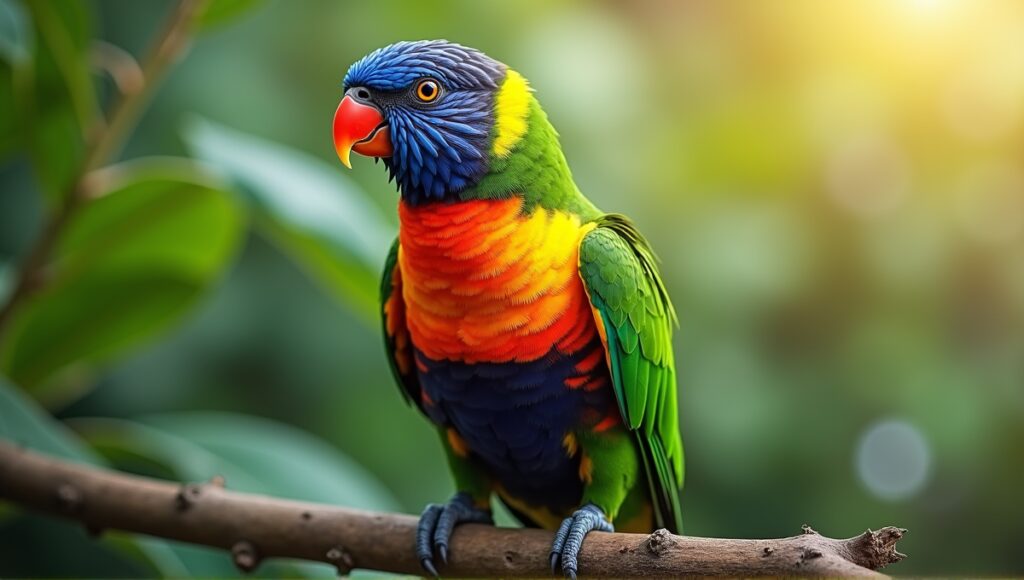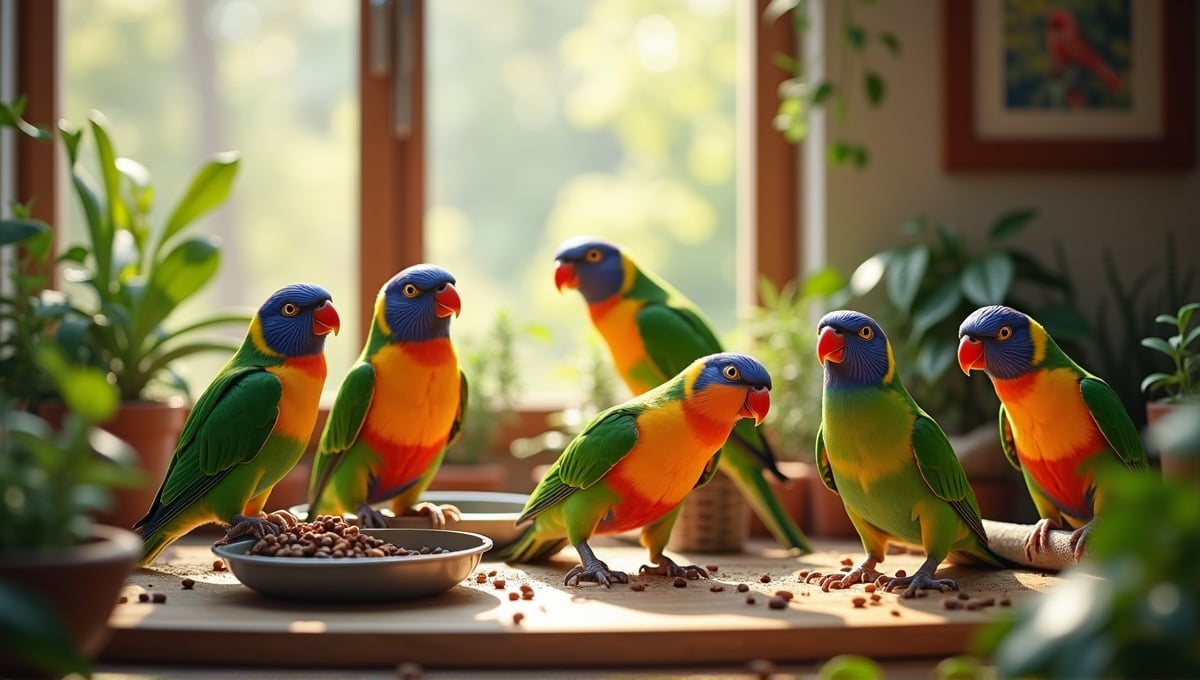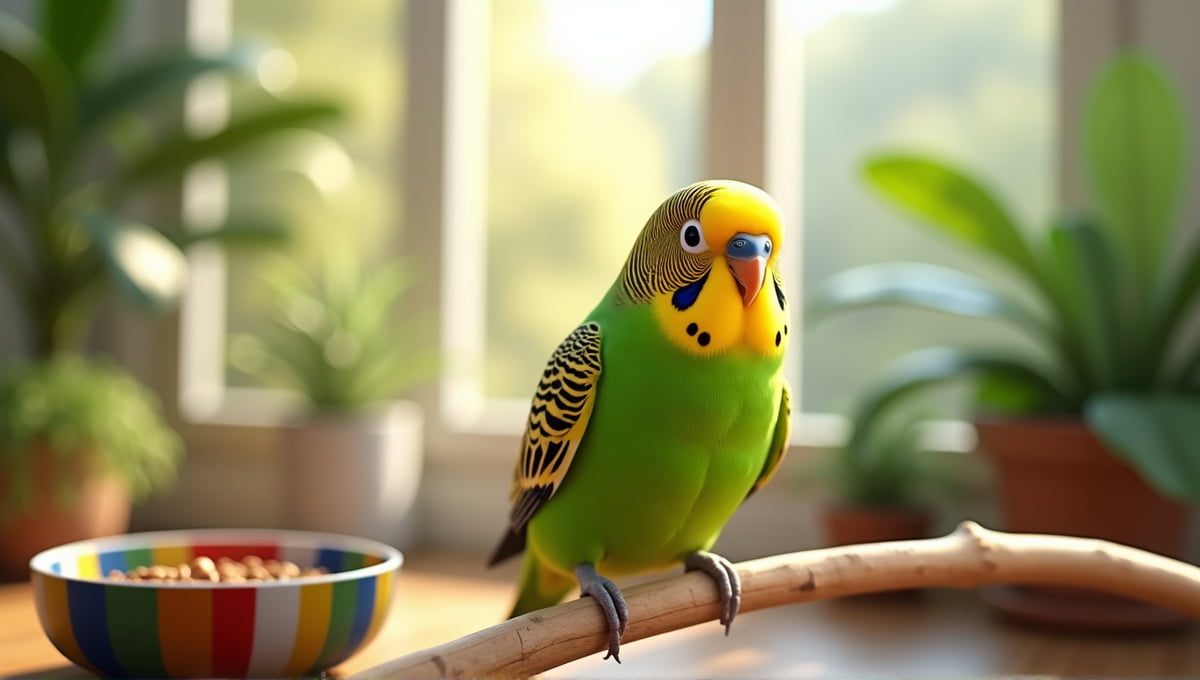I’ve been researching parrot colors as an ornithologist for many years, and I’m still always in awe of the beautiful plumage of parrots. They come in an impressive range of colors, from bright reds to rich blues. So what makes them so colorful? It all comes down to genetics, diet, and the environment. So let’s dive into the wonderful world of parrot colors.
Parrot Color Spectrum: A Rainbow of Feathers
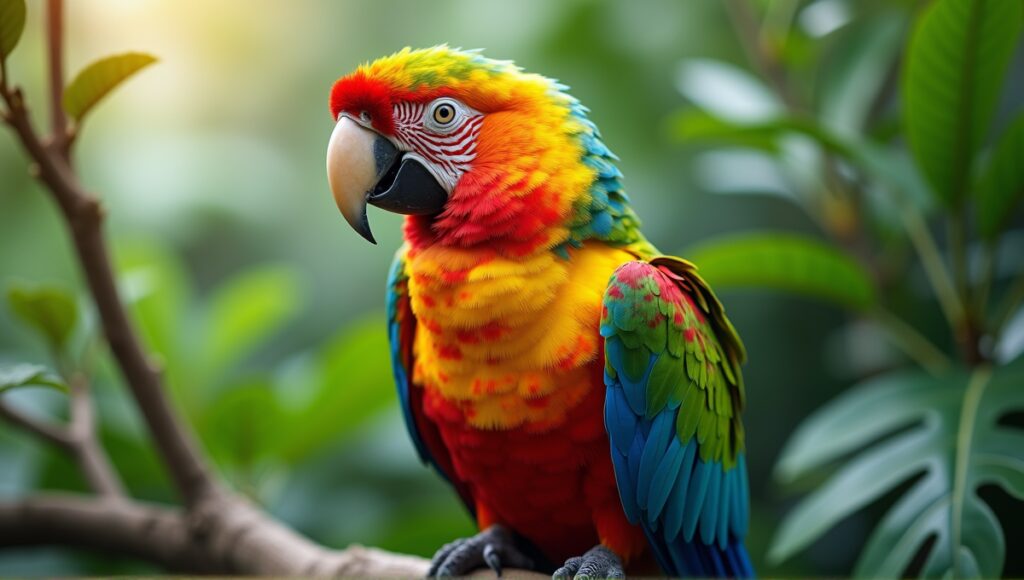
Parrots are Mother Nature’s living paintbrushes, and I never cease to be amazed by their beautiful plumage. There are nearly 400 species of parrots, each with its own unique color palette, making them a visual delight. Here’s what I’ve learned about the rainbow of colors you’ll find in parrots.
The most common colors you’ll find in parrots are:
- Green
- Red
- Blue
- Yellow
- Orange
- White
And that’s just the tip of the iceberg. There are parrot color mutations that are quite rare and unique, such as lavender, lutino, and cinnamon. These special color variations often sell for a higher price in the pet trade industry.
A variety of factors can influence parrot coloration. Genetics play a major role, but a parrot’s diet and environment also impact its coloration. One interesting fact about parrots is their ability to produce their own pigments if they want red or yellow (called psittacofulvins), which is a unique characteristic not all birds have.
Parrot color patterns are also quite intricate. You’ll see a range of colors in solid patches, patterns, or gradients, and in some species, you’ll see a beautiful array of colors on their heads or chests and tail feathers. Through years of studying these birds, I’ve learned that parrot colors are more than just pretty to look at. They serve important biological purposes and indicate the bird’s health.
Genetics and Parrot Colors
Genetics is the basis of parrot color. Each species has a distinct genetic code that dictates the colors it can be. This code is passed from parent to offspring, shaping the next generation’s appearance.
Inheritance of color characteristics in parrots is more complex. Some traits are dominant, while others are recessive. This means a parrot can carry the genes for a specific color without actually showing that color.
Gene mutations can create interesting color variations. For instance, a mutation of the blue gene might turn a green parrot yellow instead. These mutations happen naturally, but breeders can also select specific birds to see if a particular color mutation occurs.
Breeding for specific color mutations is a common practice among parrot hobbyists. However, it’s important to always put the bird’s health before aesthetics. This is one reason I’m passionate about educating avian enthusiasts about responsible breeding practices. If you’re new to keeping birds, consider reading about the ideal pet bird for beginners.
Understanding the genetics of parrot colors has also made me even more appreciative of these birds. It’s a prime example of the complex genetic processes occurring in birds—many of which we don’t see just by looking at them.
Environmental Factors Affecting Parrot Colors
The parrot diet significantly affects feather color. Certain nutrients can make a parrot’s colors more vibrant while others can make them more dull. For example, feeding a parrot foods rich in beta carotene can make their orange and red tones more intense.
The parrot’s habitat also impacts color development.
- Parrots tend to have darker feathers, a concept known as Gloger’s Rule,
- Redder feathers in wetter environments.
Sun exposure to feather pigmentation.
- If a bird gets too much sun, it can fade the parrot’s colors,
- If it gets the right amount, it will help maintain the colors.
Therefore, it’s essential to ensure there is both sun and shade in your pet parrot’s habitat.
There are seasonal changes that impact parrot color.
- Some species molt and regrow their feathers at different times, resulting in slight color changes.
This is more common in wild parrots than domesticated ones.
Through my research, I’ve found that environmental factors dictate parrot colors. As a pet owner, you can support your parrot’s natural colors with a balanced diet and proper care.
Sexual Dimorphism in Parrot Colors
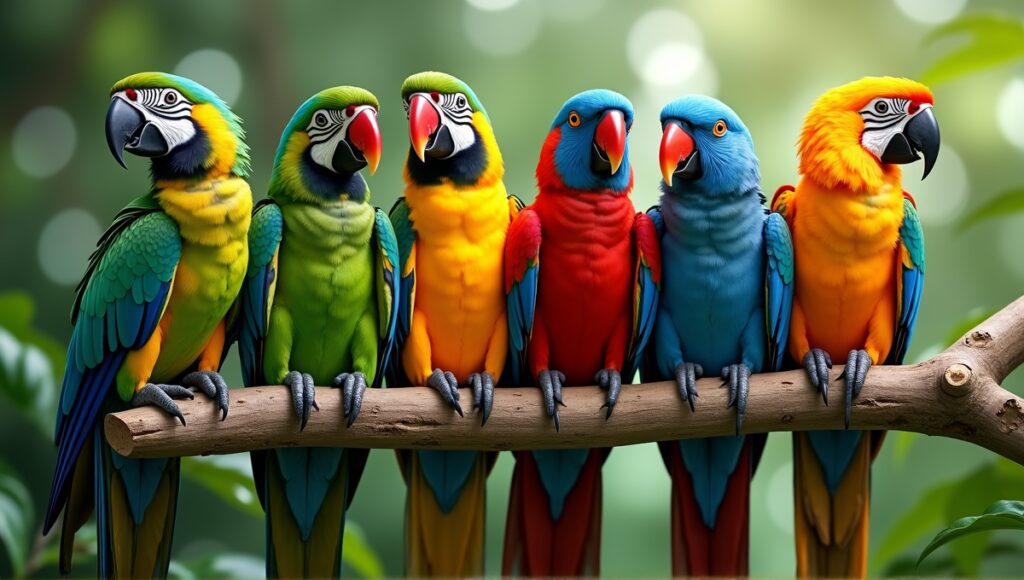
I find it interesting to study color variations between male and female parrots. This feature is known as sexual dimorphism, and it varies significantly from one parrot species to another. Some species display very obvious differences in coloration, while others have more subtle distinctions.
The reason you see these color differences in parrots is due to evolution.
- Males are often more brightly colored to attract a mate or establish dominance,
- while females are generally more muted in color to blend into their environment when nesting.
Eclectus parrots are a classic example of extreme color differences between males and females.
- Males are bright green,
- and females are bright red and blue.
- While extreme sexual dimorphism like this is relatively rare, it does occur in some parrot species.
Sexual selection has also been a major driver of evolution for parrot colors.
- Female parrots have historically preferred a more colorful mate,
- and this has ultimately led to the development of beautiful colors for parrots over time.
Interestingly, you’ll notice that in smaller parrot species, there is often more extreme color differences between males and females. This is one example of the many nuances of parrot size, coloration, and evolutionary pressures.
Identifying Parrots by Color
Color pattern is the most important factor when identifying a parrot. Here are a few of the color patterns to look for:
- Head color
- Wing coloration
- Tail feather pattern
- Beak color
- Eye ring coloration
However, there are regional color variations in parrot species. A species might have slightly different colors in one part of its range compared to another.
There are several color pattern identification tools for parrots. Field guides, bird identification apps, and online databases are all helpful. I’ve found that using these tools in combination with careful observation is the most effective strategy.
The most common mistakes birders make when identifying parrots based on color patterns are overlooking subtle color differences and failing to consider how the bird’s color may change as it ages. Young parrots often have less vibrant colors, and the lighting conditions can also influence how we perceive a parrot’s color.
Accurate identification is important for parrot conservation efforts. It allows researchers to track population trends and identify species that need protection. As a bird watcher, your observations can help contribute data to these efforts.
Parrot Colors in Their Natural Habitats
Camouflage is essential for parrot survival, and many species have colors that allow them to blend in perfectly with their environment. For example, the most common color for forest-dwelling parrots is green because it helps them blend in with the leaves.
It’s interesting to see how parrot colors correspond to their ecosystems. Many desert parrots are brown, gray, and other sandy colors, while parrots in tropical areas are more colorful.
There are also some parrot species with specific color variations based on their habitat:
- The Golden Conure, for example, has bright yellow feathers that allow it to stand out against the green colors of the Amazon rainforest.
Different colors also serve different purposes in different forest layers:
- Parrots in the upper canopy, for example, often have brighter colors that stand out in the dappled sunlight,
- while those in the understory have more muted colors.
Studying parrots in the field, I’ve been amazed at how perfectly their colors allow them to blend in with their habitat. It’s a great example of natural selection at work and the beauty of evolution.
Most Colorful Parrot Species
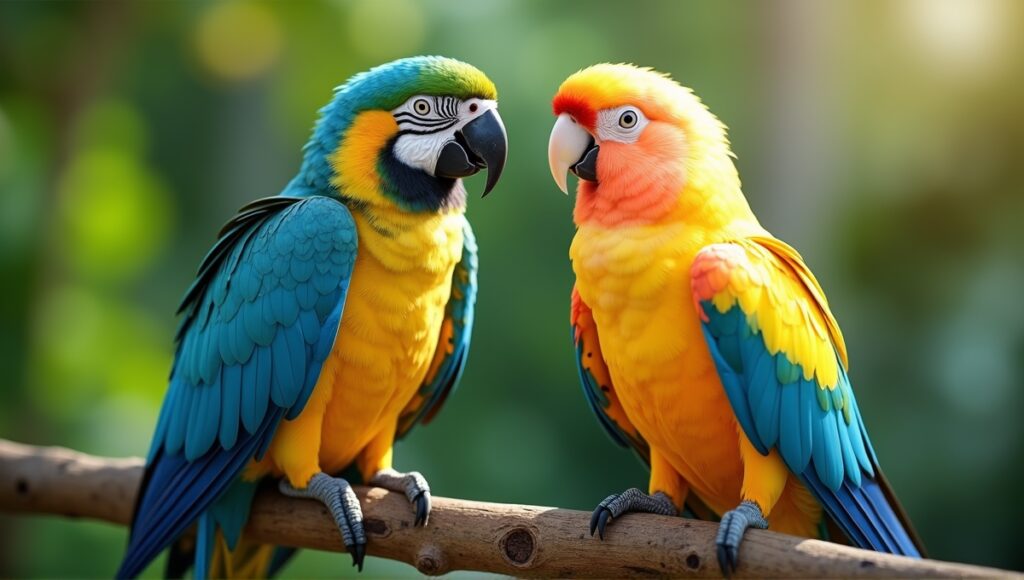
Here are a few of the most colorful parrot species I’ve seen:
- Scarlet Macaw
- Rainbow Lorikeet
- Sun Conure
- Eclectus Parrot
- Hyacinth Macaw
The Sun Conure is particularly striking with bright orange, yellow, and red feathers. These small parrots reach about 12 inches in height and weigh 4-5 ounces.
Rainbow Lorikeets are aptly named for their beautiful array of colors. They’re a bit smaller at 10-12 inches tall and weigh between 2.6 and 5.5 ounces.
Some parrots have truly unique color patterns. The Mitchell’s Lorikeet, for example, has a stunning blue head that contrasts with the uniformly green body.
• Albino and melanistic parrots are some of the rarest color combinations. These are genetically all white or all black, respectively.
Many colorful parrot species have historical significance. In some cultures, they’re considered symbols of paradise or the gods’ messengers. Artists and storytellers have been capturing the beauty of these birds’ plumage for millennia.
If you’re caring for pet birds, choosing appropriate pet bird toys can enhance their environment and accommodate their needs.
Final Thoughts
Parrots are a beautiful display of nature’s artwork, thanks to their vivid, colorful feathers. They come in all color variations from common to rare color mutations, so there is a wide range of colors you’ll see parrots sporting. Their colors are the result of genetics, diet, and the environment. Each parrot’s color is an adaptation or evolution story. You now have the tools to truly understand and admire the world of parrot colors. So keep researching and admiring these walking rainbows!


